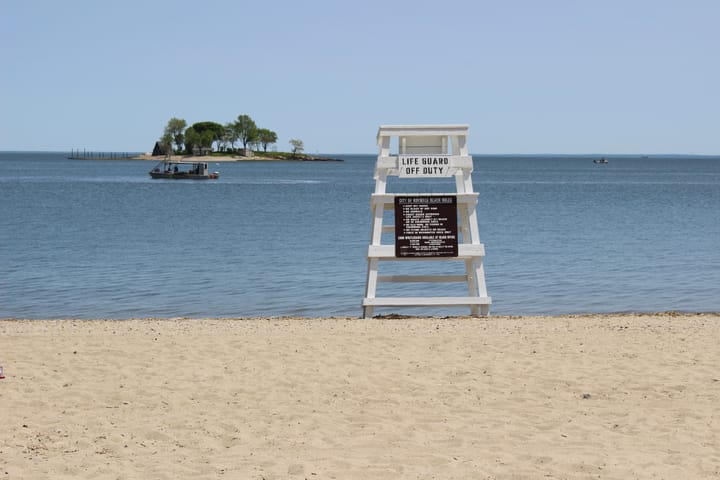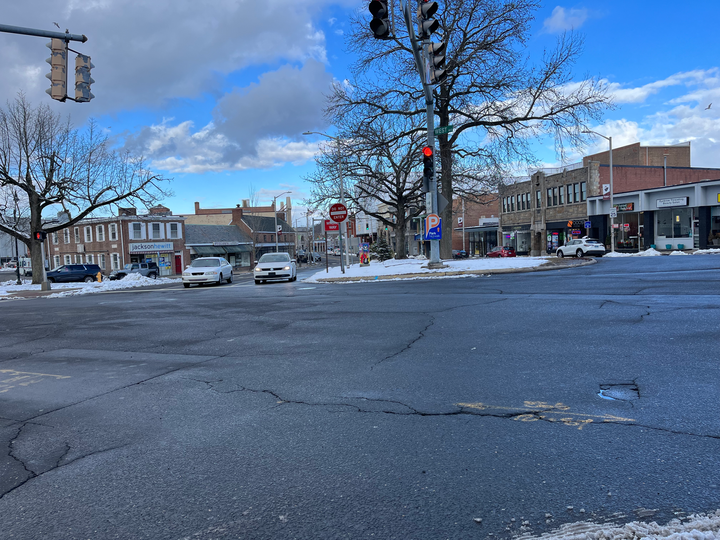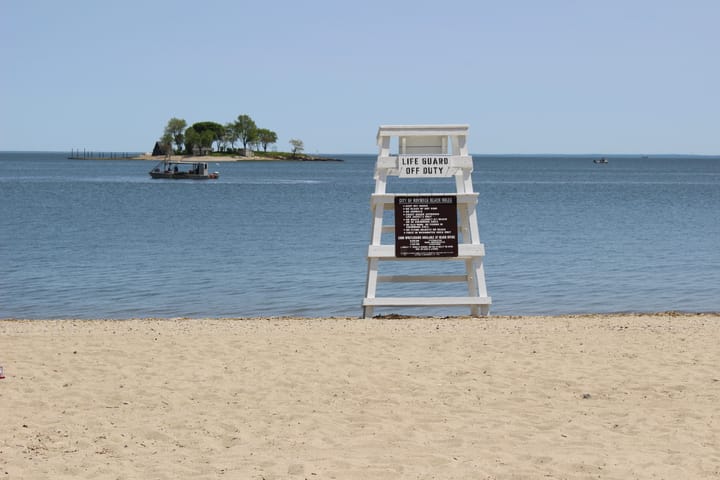Grading the Long Island Sound’s Waters in Southwest Connecticut
What does the 2022 Save the Sound report card say about southwest Connecticut? We dove into the data.
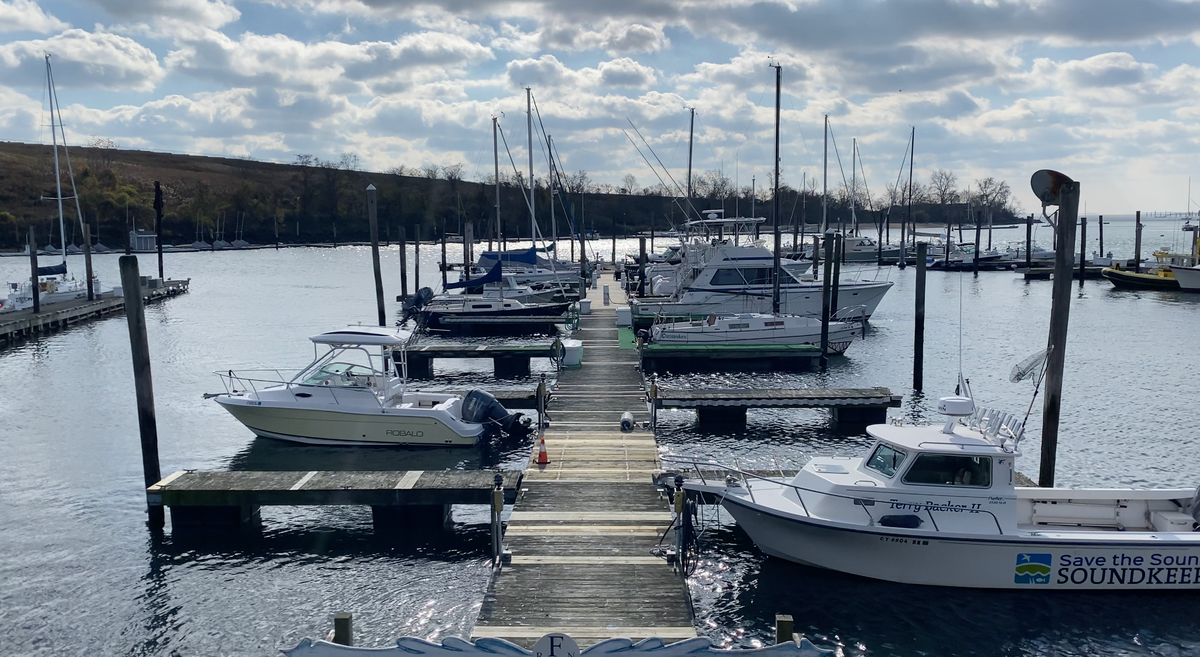
The Long Island Sound is an essential part of the southwest Connecticut region.
“There's millions of people that live along the Sound, that live up in the watershed, the waters that affect the Sound, and the Sound is full of fish, full of wildlife,” said Bill Lucey, the Long Island Soundkeeper. “The Sound is incredibly integral to the ecology, the economy, and just our well-being.”
That’s why we’re diving into what the 2022 Save the Sound Report Card says about our area. In general, the report card rated the water quality of the Long Island Sound in southwestern Connecticut as average—with some bright spots receiving A’s and some problematic spots receiving a D-.
If you’d like to learn more about the report card and health of the Sound overall, check our story.
The Waters of the Sound in Southwest Connecticut
For the waters of the Sound itself, our region includes two areas:
- Western Basin, which includes major cities, like Norwalk, and Bridgeport, runs from just west of the Norwalk River to the Housatonic River. It received a B+ grade for its water quality.
- The Eastern Narrows, which includes major cities, like Stamford, runs from just north of New York City to just west of the Norwalk River. It received a C grade for its water quality.
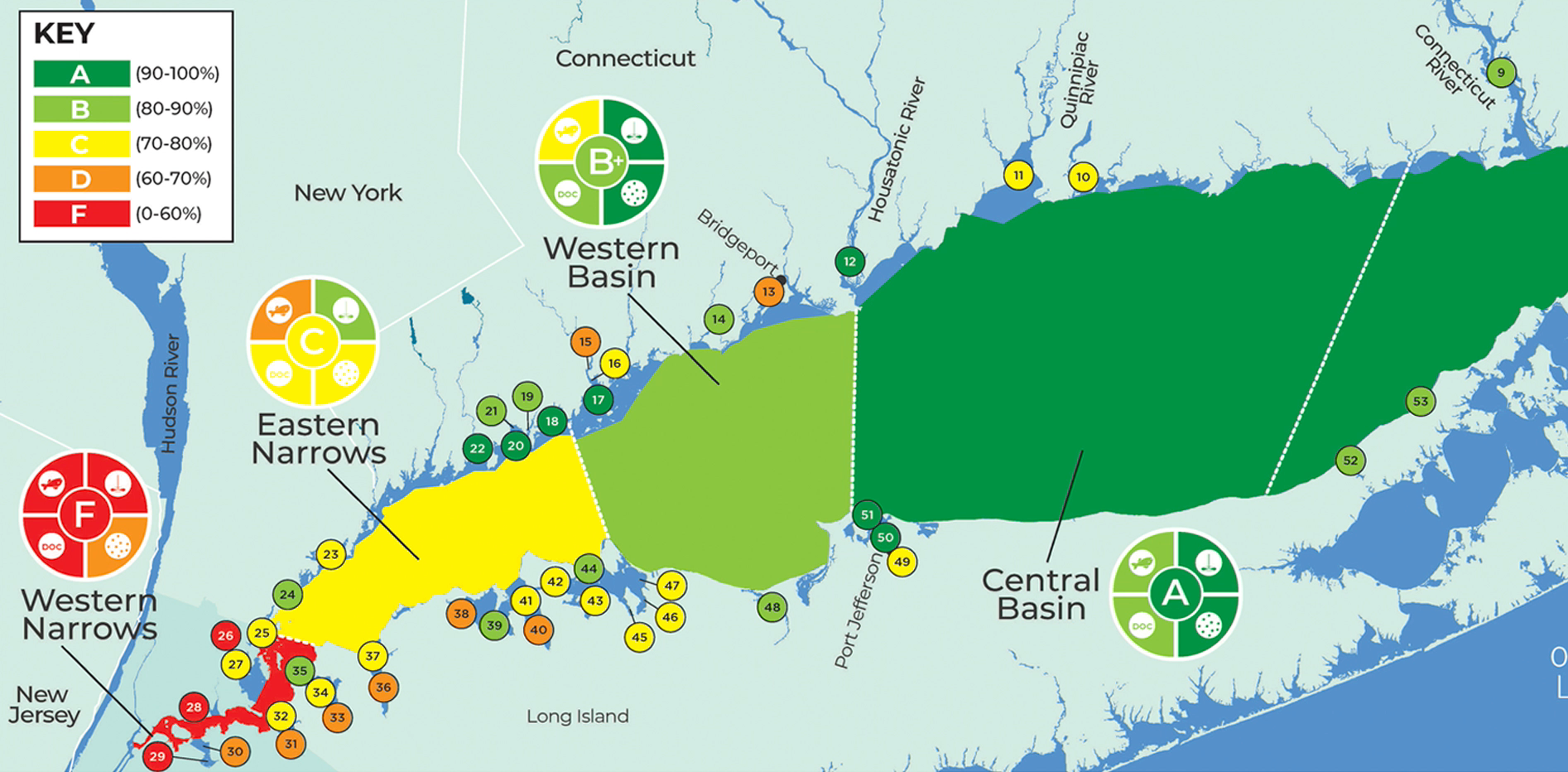
Jason Krumholz, Ph.D., a scientist with Save the Sound, said that both of these grades are “similar to the last report card” from 2019.
“The trend in water quality was improving from 2008 to 2017, but since 2017, the trend has become variable, with the grades sometimes rising and sometimes falling,” he said. “Both of these areas are densely populated and the impact is less limited by the more distant Atlantic Ocean.”
According to the report card, the lowest score of the Western Basin’s B+ is from dissolved oxygen. The report card noted that “this area is less developed than the Narrows, but is still densely populated and showing signs of human impact.”
Meanwhile, the Eastern Narrows received a C, with the levels of dissolved oxygen scoring the lowest, although chlorophyll A and dissolved organic carbon also scored average or below. Its grades, particularly for dissolved oxygen levels are “indicative of a stressed aquatic environment in need of further measures to restore water quality.”
Krumholz said that the grades for these make it clear that “our initial hope for a steady trajectory of uninterrupted improvements are not being realized.”
The Bays that Feed into the Long Island Sound
The report card also includes water quality grades for nine bays in our region that feed into the Sound.
“Four years of bay segment grades are in this report, and they point to many locations in need of restoration or preservation at the local level,” Elena Colon, the laboratory manager at Save the Sound, said.
Those grades for our region were:
- Stamford Harbor: A-
- Holly Pond: B-
- Cove Harbor: A-
- Darien Harbor: B+
- Scott’s Cove: A-
- Outer Norwalk Harbor: A-
- Middle Norwalk Harbor: C+
- Inner Norwalk Harbor: D-
- Mill River/Southport Harbor: B-
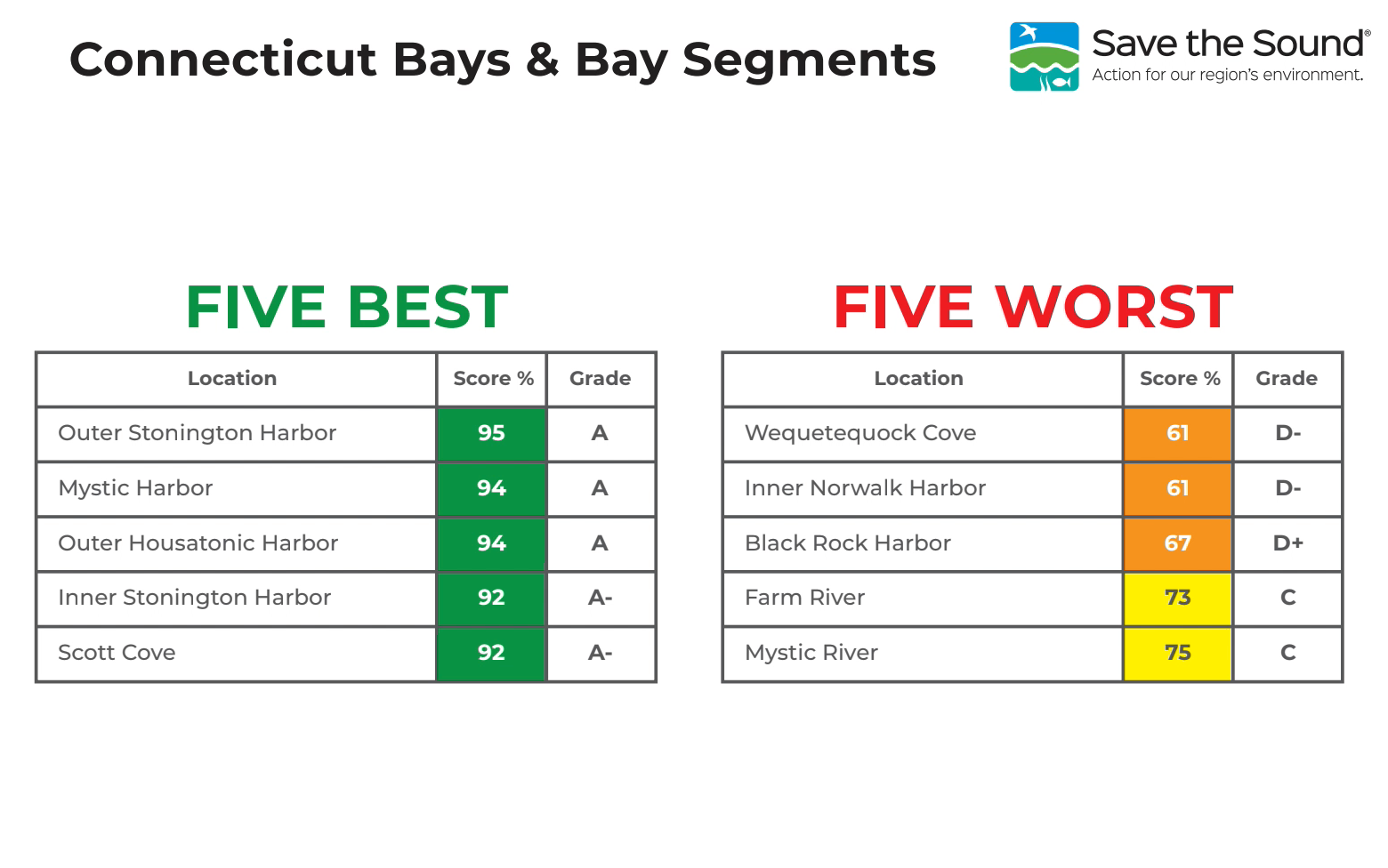
Norwalk’s Inner Harbor was listed as one of the five worst bays, in terms of water quality along Long Island Sound, while Scott’s Cove was listed among the five best.
Krumholz describes the best grades as bays that are “typically well flushed” by the Sound and are “less impacted by the pollution coming from their neighboring land.” As for the worst grades, those tended to happen in areas where “flow is restricted and nutrients flowing off the land are more concentrated.”
What Can I Do with This Information?
Lucey said that people “want fish you can eat without worrying about them being contaminated” and to be able to “jump in the water without worrying about getting rashes or some kind of bacterial infection.”
In order to ensure the health of the Long Island Sound and make sure those things don’t happen, he called on members of the public to “look at your actions.”
Some recommendations from Save the Sound include:
- Reducing water usage to help lighten the impact on “overtaxed” water treatment plans
- Maintaining your sewers, particularly if you have septic systems on your property
- Keeping litter out of the waterways
- Planting native species
- Calling on elected officials to support policies that promote the environment and water quality
You can also get involved with local organizations working to clean up and improve the Sound. Some of them include:

